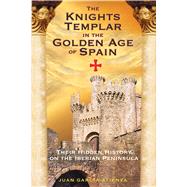
The Knights Templar in the Golden Age of Spain: Their Hidden History on the Iberian Peninsula
by Atienza, Juan GarciaRent Book
New Book
We're Sorry
Sold Out
Used Book
We're Sorry
Sold Out
eBook
We're Sorry
Not Available
How Marketplace Works:
- This item is offered by an independent seller and not shipped from our warehouse
- Item details like edition and cover design may differ from our description; see seller's comments before ordering.
- Sellers much confirm and ship within two business days; otherwise, the order will be cancelled and refunded.
- Marketplace purchases cannot be returned to eCampus.com. Contact the seller directly for inquiries; if no response within two days, contact customer service.
- Additional shipping costs apply to Marketplace purchases. Review shipping costs at checkout.
Summary
• Explores the mysteries surrounding the location of Templar enclaves
• Examines the Templar connections to the Cathars and to the troubadour culture
• Looks at the Order’s influence in the kingdoms of Aragon and Catalonia and the Spanish monarchy itself
The rise and fall of the Templar Order constitutes a fundamental and decisive episode in medieval history, and the destruction of the Order constitutes a pivotal point that fundamentally altered the direction of society. While much is known about the history of the Templar Order in France, home of its chief commandery in Paris, and in the Latin States of the Middle East, their contribution to events on the Iberian peninsula has until now remained obscure and unexplored.
Renowned Templar scholar Juan García Atienza reveals here the important role the Templars played in the Reconquista that saw the Moors driven out of Spain and demonstrates the great influence they exerted in the kingdoms of Castille and Navarre and the territories of Catalonia and Aragon. He examines the mysterious connections between the Templars and the Cathars and troubadours as well as the mystery surrounding the location of all the Templar enclaves in the Iberian peninsula. He also unveils the important role the Templars had as teachers of the Spanish king James I, known as the Conqueror, whose attempt to establish a universal theocratic empire may have been a reflection of Templar ambitions, and explores the Order’s suppression in Spain and how it survived in Portugal by simply changing its name.
Author Biography
Table of Contents
| Introduction | 1 | (11) | |||
|
|||||
|
12 | (21) | |||
|
33 | (19) | |||
|
|||||
|
52 | (30) | |||
|
82 | (35) | |||
|
117 | (28) | |||
|
145 | (39) | |||
|
184 | (25) | |||
|
209 | (33) | |||
|
|||||
|
242 | (25) | |||
| Notes | 267 | (9) | |||
| Bibliography | 276 | (7) | |||
| Index | 283 |
An electronic version of this book is available through VitalSource.
This book is viewable on PC, Mac, iPhone, iPad, iPod Touch, and most smartphones.
By purchasing, you will be able to view this book online, as well as download it, for the chosen number of days.
Digital License
You are licensing a digital product for a set duration. Durations are set forth in the product description, with "Lifetime" typically meaning five (5) years of online access and permanent download to a supported device. All licenses are non-transferable.
More details can be found here.
A downloadable version of this book is available through the eCampus Reader or compatible Adobe readers.
Applications are available on iOS, Android, PC, Mac, and Windows Mobile platforms.
Please view the compatibility matrix prior to purchase.
